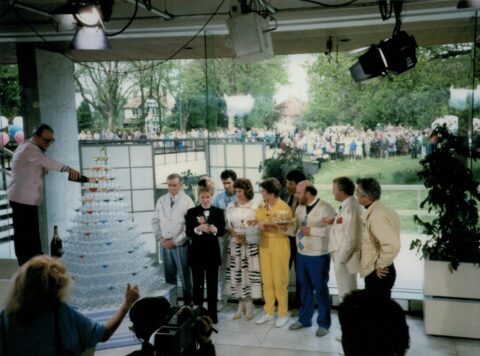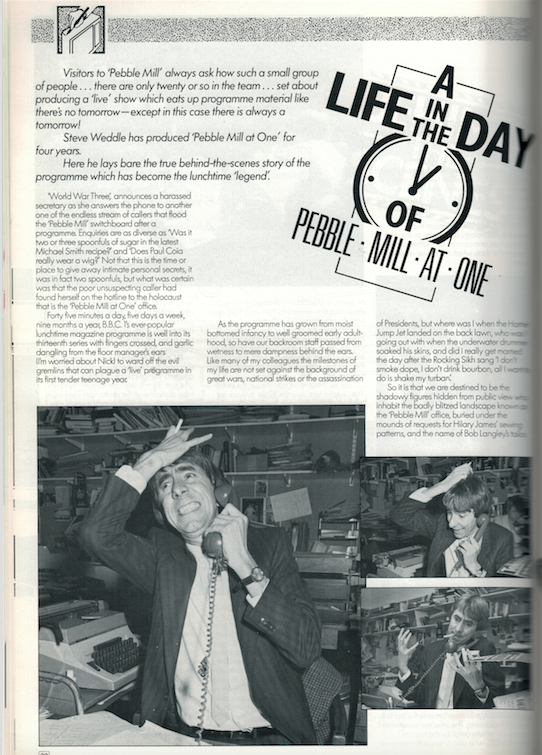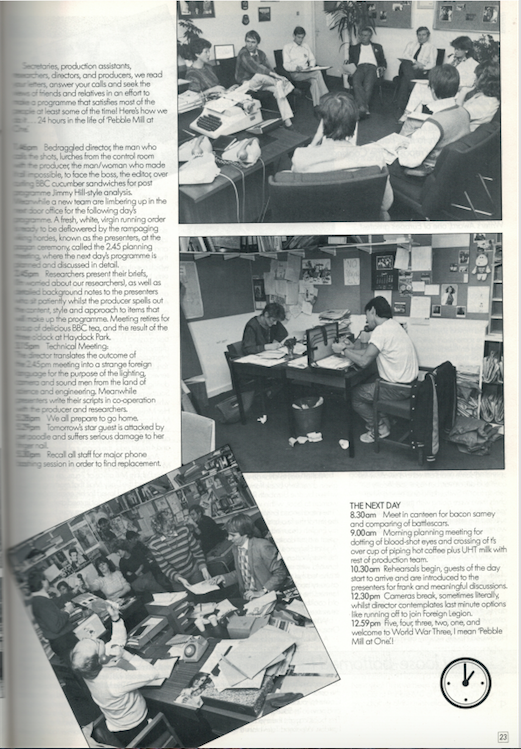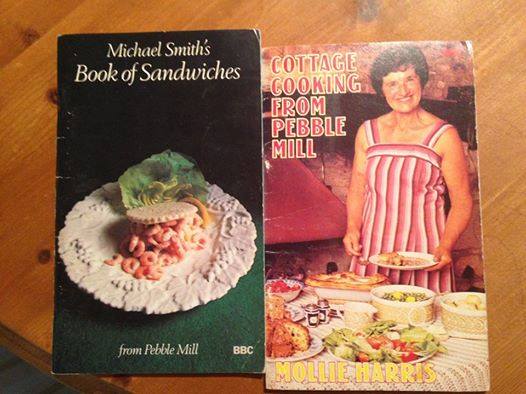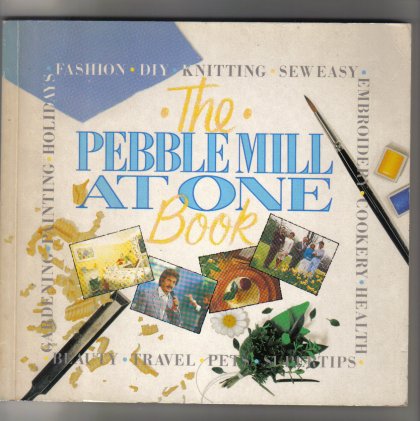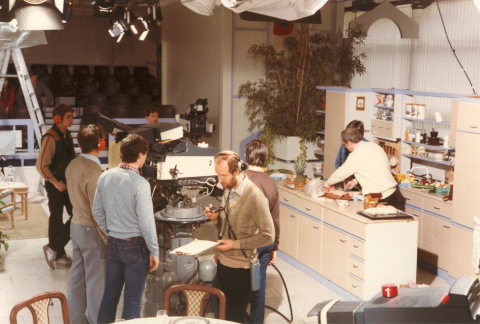
Link 125 camera on Pebble Mill at One
Copyright resides with the original holder, no reproduction without permission. Thanks to floor manager, Eurwyn Jones, foreground in this photo, for sharing it.
The photo shows the Link 125 cameras during a rehearsal with cook Michael Smith, on Pebble Mill at One, circa 1981.
The Link 125 cameras replaced the EMI 2001 cameras, which were extremely popular with cameramen. The Links did not enjoy the same popularity.
The following comments were left on the Pebble Mill Facebook group about the camera:
Keith Brook: ‘Luckily for me I left before the Links came in. My ex-colleagues told me how bad they were and how difficult it was to focus. If you wound up the peaking, the camera noise became a white fog over the whole viewfinder. If you turned it down, the focus was likely to be soft, but you couldn’t tell. Engineers chose cameras and cameramen had to make do with what they were given. Despite far, far better cameras being available from Japanese manufacturers, the BBC had decided to ‘do the patriotic thing’ and use a British company. Fortunately, the Links didn’t last long.’
Matthew Skill: ‘The patriotic thing being to use a camera company that hadn’t been around that long compared to the real camera-makers…? And then to eventually indirectly/inadvertently drive same late-comer company to the wall as it tried to satisfy BBC requirements for a ‘modern’ studio camera (130) to replace the 110s and 125s. A curious tale all round….’
Stuart Gandy: ‘That’s certainly true what Keith says about the Links. After the crispness of the 2001’s, they never seemed sharp. There was also an odd condition that could happen that resulted in a strange slight loss of focus in the middle of the screen, which became known as the ‘teardrop’, because of its shape. The cause was never fully explained, but I think adjusting the registration controls fixed it – for a while. Even now, I remember the words of the late Mike Lee, when he would come across the line up area and say quietly, ‘we’ve got a teardrop’.’
